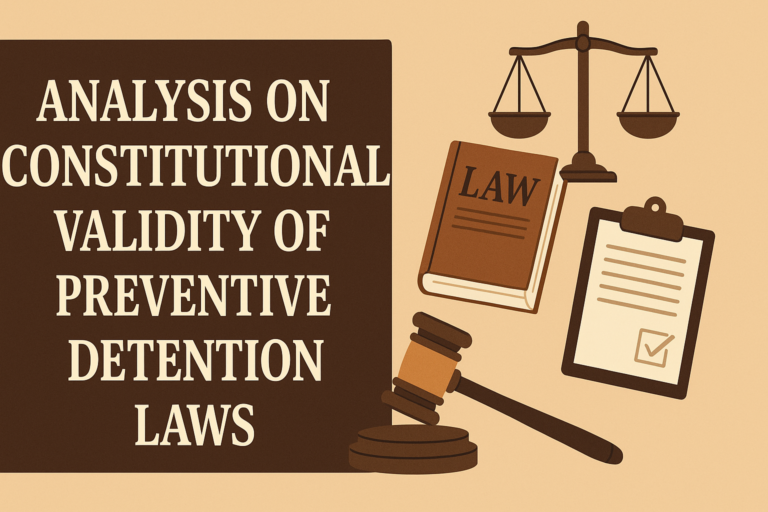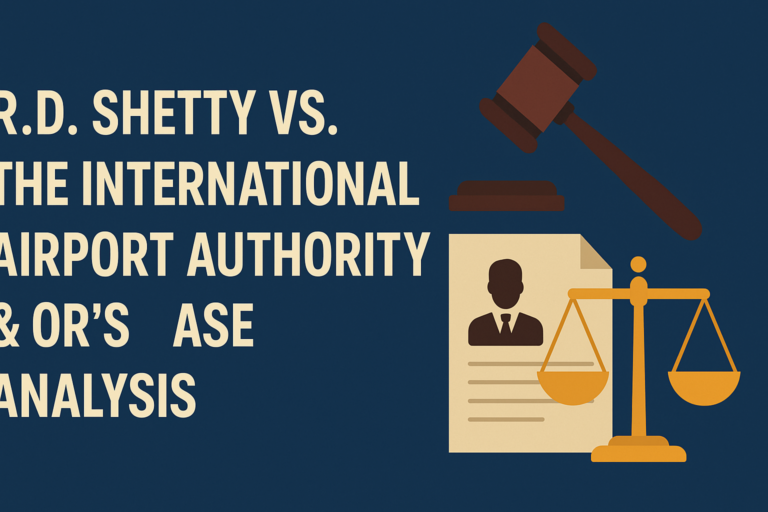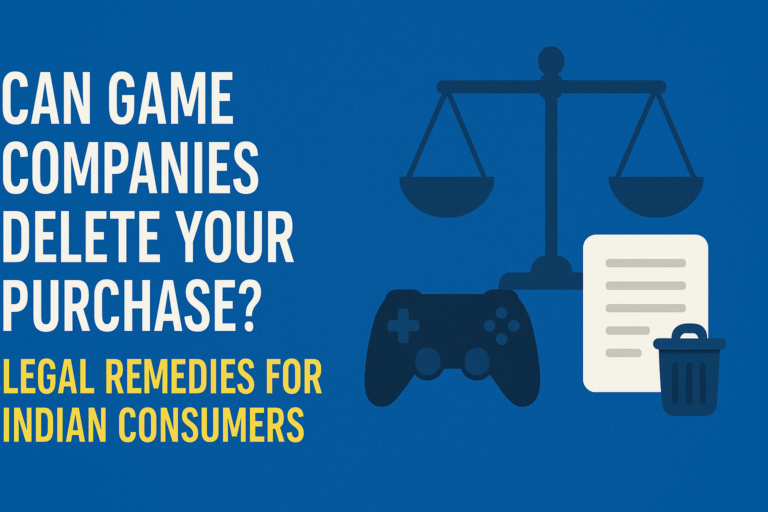
This article has been written by Sathya Sruthi, currently in her 4th year pursuing BBA LLB in Symbiosis Law School Hyderabad.

ABSTRACT :
Indian Criminal Law plays a significant role in protecting the rights of women and legal shelter against various forms of violations, exploitation and discrimination. Violence against women is an act of gender-based violence which results in any physical, sexual or psychological suffering to women in the form of threats, harassment, coercion and depriving their liberty in public as well as private life. Criminal law has evolved with cathartic amendments and the introduction of specific legislation to address issues like domestic violence, stalking, phishing, cyber defamation, sexual harassment, etc. The legal measure for the reduction and stoppage of such crime rates against women to ensure equal justice and protection for women while at the same time promoting dignity and liberal choices will be explained by the criminal law of India. The overview of the same plays a key role in the contribution to empowerment and gender equality. Nonetheless, much progress needs to be made despite the stringent laws and amendments in criminal law.
Keywords: exploitation, discrimination, empowerment, gender equality, liberation
INTRODUCTION:
Criminal law in India has evolved significantly in safeguarding women’s rights, underlining the significance of gender equality and social justice. India is known for its cultural heritage and roots, and criminal law is instrumental in considering gender disparities. This felt like a need for women’s empowerment to promote equal justice and treatment. The criminal law served as a transformative journey for India in shaping and strengthening legal shields for women. The crimes against women tend to be unequal figures as every year, despite the stringent rules where this state holds tradition and liberalization intact, the criminal law seems to have the balance in ensuring women’s safety, empowerment, liberation and self-sureness. Gandhi said real freedom in India is gained only when women can walk freely on the roads at night. The evolution of safeguarding rights, which is central to India’s progress as gender inequality and blaming women for anything concept, was very prevalent in many crimes and situations against women. The introduction and amendments to criminal law set a deeper stage for analyzing and formulating every legal way to protect women and redundancy in crimes committed against women physically, emotionally, psychologically and economically. This led to advancements in laws and punishments for criminal offences and created a dynamic balance of tradition, societal change, crime rate, and legal reforms[1].
CRIMINAL LAW AND WOMEN’S RIGHTS:
The various criminal laws of India are the IPC, CrPC and the Indian Evidence Act (IEA). These laws do not cover all the aspects and all offences committed against women but specific issues based on examination. A great instance would be how marital rape is an exception to the rape umbrella, where a man who has sexual intercourse with his wife under the age of 18 is not raped under Section 375 of the Indian Penal Code. The oppression of women is also displayed in the previous law that restricted the spouse from filing a complaint against adultery, making it gender-based in provisions and offences. These gaps in legislation didn’t acknowledge many offences like workplace harassment, cyber crimes against women and honour killing. The gender-based discrimination starts from the time a girl is born till molesting her, irrespective of her age. Then, the UN Declaration on the Elimination of Violence against Women came up with the definition of violence against women, which is stated above. This also highlights the necessity to take crucial steps to address the issues in a country like India, which has such high crime rates against women[2].
LAWS GOVERNING WOMENS RIGHTS IN IPC AND CRPC:
This heading can be divided based on the women life cycle from the time of her birth to death. Starting with the first aspect of female infanticide where it was honour for vedic people to kill female child when it is conceived and it was considered a shame if the child was a girl. The law that governs the prevention of female foeticide as well as prenatal sex screening would be the Pre-Natal Diagnostic Techniques (Regulation and Prevention of Misuse ) (PCPNDT) Act 2004, an amended version of the PNDT[3] Act 1994.
The laws or provisions under outraging the modesty of women:
- Section 354 penalizes the use of criminal force or assault that was caused to outrage the modesty of women.
- The heinous crime that can be committed against anyone, but especially a women, involves violating a person’s integrity and dignity in a bodily manner. Rape also extends to non-consensual sexual acts. These assaults on a physical and mental basis tend to scar a woman, especially leaving an ever-lasting trauma. Women are so unfairly affected, and this is said to be a result of gender equality, patriarchy and disrespect for women.
- Criminal law plays a very crucial role in bringing stringent punishment, deterring the offenders and ensuring justice and compensation are granted for the emotional and physical trauma faced by the victim. The Indian Penal Code section 375 defines rape, and section 376 talks about the punishment for rape and the following sections on procedural safeguards and punishments for gang rape and repeated offenders. Criminal lawmakers were cautious about the legal framework and addressed issues like delays in justice or proceedings, mishandling of cases due to political and influential backgrounds, and blaming the victim for instances.
- The Criminal Law (Amendment) Act 2013
- In India, laws like the Indian Penal Code (IPC), amended by the Criminal Law (Amendment) Act of 2013, broaden the definition of rape, enhance punishments, and establish provisions for victim protection. The amendments, introduced in the wake of high-profile rape cases, aim to ensure stricter penalties for offenders, quicker trials, and more sensitive treatment of victims by police, medical personnel, and the judiciary. However, challenges remain in the enforcement and effective implementation of these laws to ensure justice for all victims of sexual violence[4].
- Section 509 of the IPC talks about the punishment for any word gesture or act that tend to insult the modesty of women.
- It was the landmark case of Nirbhaya case [5]which involves a brutal gang rape and murder of a medical student in Delhi and this incident lead to wide outrage among public. The main issues in this case is the safety, societal attitudes towards gender-based violence. Six perpetrators raped the victim and the Supreme Court declared death penalty for four out of the six convicts and one convict was said to be a juvenile. This case led to significant legal changes, including Criminal Law (Amendment ) Act 2013. The criminal amendment act covers the wider scope of definition of rape and severe penalties, and the protection granted to victims was meliorated.
- The Criminal Law Amendment also brought in Section 354A to 354D of IPC after the wide recommendations given by the public and lawmakers after the nirbhaya case, which are:
- Section 354A defines sexual harassment and punishment for the same
- Section 354B: The punishment that involves the disrobement of a women
- Section 354C: The penalisation for voyeurism i.e. having pleasure at the sight of watching others naked or while engaging in sexual activity
- Section 354D: talks about the punishment for stalking
In the case of Independent Thought v. Union of India[6] , which is a public interest litigation (PIL) where the 2nd exception to the Section 375 of IPC was challenged by a human rights organization that allowed non-consensual sex between husband and wife where the wife was above 15 years within 18 years of age, i.e. marital rape as an offence per se by the Criminal Law Amendment Act 2013 as well as POSCO Act 2012. The Supreme Court, in this case, held the second exception is unjust and discriminatory of nature in the case of a married and unmarried girl and violative against their dignity and integrity. The age limit was raised to 18 from 15 in alignment with other laws as the previous limit seemed unreasonable.
The laws governing Cruelty and Domestic Violence:
- Section 498 A of the IPC talks about punishment for causing cruelty to wife by her husband or his relatives that involves physical, mental and emotional harassment
- Dowry Death: Section 304B of the IPC talk about the dowry death and the punishment for the same. In the very recent case of Vismaya [7]a dowry death case of a nair girl who was a student of Ayurveda. The cause of her death was leading to the dowry related abuse she was faced from her husband. Despite receiving dowry during the wedding the husband demanded more cash and harassed Vismaya. The court held Kiran guilty of dowry death under Section 304B along with abetment of suicide under Section 306 and cruelty under 498A of IPC. The husband was also sentenced to imprisonment and asked to pay a fine of Rupees 12 lakhs.
- Section 174 of the CrPc 1973 talks about death that are caused unnaturally that also includes dowry death under such division
- Section 113A of the Indian Evidence Act (IEA) of 1872 that talks about presumption of abetment of suicide by any married women which might be due to dowry harassment.
DOMESTIC VIOLENCE: The domestic violence against women can be of different forms, including Physical Abuse, Economic and Mental abuse.
The physical abuse would include violent act performed by the husband or his relatives against the wife that causes pain and physical harm in the form of hitting, beating or attacking. The abuse extends also to forcing someone to take drugs or alcohol without that persons will. Economic abuse would include the harassment causing the victim to be financially dependent on them. The finances are controlled, restricting the victim’s economic resources to fulfil her basic needs. Limiting the access and restraining the wife from going to work would also be brought under this cap. Mental abuse involves the husband and his relatives using inappropriate language or non physical factors like isolating, controlling the actions or frightening the victim and verbal abuse also causes mental abuse[8].
- Section 125 of the CrPc provides for Maintenance of wives, children and parents. This provision aims in ensuring the women after her divorce when unable to maintain herself and child can use of this provision to look after herself and kin through allowance or maintenance defined under this section. The definition of a wife under Section 125 not only married but also divorced women, second wives and also people in live in relationship are also entitled to maintenance. The current act of BNSS has ensured that it not only extends to women but also to husbands who are unable to maintain themselves in catering to gender equality.
In the Shah Bano[9] case a 73-year-old woman called Shah Bano was divorced by her husband using triple talaq (saying “I divorce thee” three times) and was denied maintenance. She approached the courts and the District Court and the High Court ruled in her favour. This led to her husband appealing to the Supreme Court, saying he had fulfilled all his obligations under Islamic law. The Supreme Court ruled in her favour in 1985 under the “maintenance of wives, children and parents” provision (Section 125) of the All India Criminal Code, which applied to all citizens irrespective of religion. Further, It recommended that a uniform civil code be set up.
The domestic law in India is governed by the Protection of Women from Domestic Violence Act, 2005 (PWDVA). This legislation ensure criminal consequences even though the act being civil if there is breach in the statute provision. The important provisions under the said act would be:
- Section 3– that defines domestic violence that might cover physical, economical, sexual and emotional abuse and would include any harm caused to health, safety, life or well being of any women.
- Section 12– that talks about how a women can file her complaint directly under the Magistrate in respect to domestic violence faced by her. This section also emphasize on direct access of women to legal remedies.
- Section 17– that talks about a women not to be evicted or thrown out of her shared household irrespective of whether she has any right or title to the property.
- Section 18 – that allows Magistrate a power to pass any protection order that prohibits the accused from committing any kind of domestic violence that concerns the victim nor the alienation of the stridhan which is women’s personal property given during her marriage and cannot be taken away from her.
- Section 19– talks about residence orders that is granted by the magistrate to ensure the wife to continue living in the shared household to guarantee that abuser doesn’t enter residence.
- Section 20– that talks about monetary relief that the court can order to meet the expenses that was incurred by the victim as a result of domestic violence like medical expenses, losses and maintenance.
- Section 21– where the court will order for temporary custody of child to the victim so that the child is not grown and placed in such toxic environment
- Section 22– The victim to be awarded appropriate award for the mental and emotional distress that they were put through the violence.
- Section 31– The protection order should not be breached and any such breach would be a cognizable and non bailable offence where the punishment would go up to one year, fine or both.
The Bombay High Court in the case of Ishpal Singh Kahai v. Ramanjeet Kahai [10] reiterated that the object of the DV Act is to grant statutory protection to victims of violence in the domestic sector who had no proprietary rights. The Act provides for security and protection of a wife irrespective of her proprietary rights in her residence. It aims at protecting the wife against violence and at the prevention of recurrence of acts of violence.
The provisions governing Obscenity under criminal laws:
- Section 292– that prohibits any kind of books, pamphlets or figures that are obscene for any purchase, sale or distribution is an offence.
- Section 293– that prohibits the obscene objects that sold or distributed to kids ie under the age of 20 is an offence.
- Section 294 – The penalisation of any act of such obscene songs or words or ballads that are used in public places.
- Section 67 of the Information Technology Act, 2000 that talks about about how publication or transmission of obscene material in the electronic form is a crime and accused to charged with charges, fine or both under Section 67B.
In the College Romance Web Series Case [11] a 2024 case where the Supreme Court quashed the orders from the investigation done by the prosecution against the makers of the above series and for allegedly publishing and producing such obscene material under Section 67 and 67A of the IT Act. The Supreme court overturned Delhi High court decision that not only vulgar language is said to be obscene but also linked with the corrupt mind or influence. In this case, The language is a outburst of frustration and excitement rather than lustful or impertinent or inappropriate feelings. The arbitrary use of Section 67 was criticised in the case.
The Indecent Representation of Women (Prohibition) Act of 1987 is a legislation that talks about indecent representation of women in textbooks, advertisements, posters, writings or any media form is prohibited.
The provisions governing Acid Attack in criminal law:
- Section 326A of IPC – talks about punishment for voluntarily causing grievous hurt by throwing acid where the imprisonment is for a period not less than 10 years.
- Section 326B – the punishment for attempting for voluntarily throwing acid which is not less than five years.
These two section brought under the Criminal Law Amendment Act 2013.
- Section 357A & 357B of the CrPc which talks about compensation for the victim of acid attack in addition to the punishment attached
- Section 357C that deals with the obligation of the hospitals to provide with spontaneous treatment to victims of such acid attack. A minimum compensation of 3 lakhs to be paid to the victim.
- Section 114B of the Indian Evidence Act which is added provision for presumption of the person throwing or in any attempt to throw acid to have knowledge and intention ie mens rea to cause harm to another person
In the case of Lakshmi v. Union of India[12] the Supreme Court after realising the seriousness of the acid attacks issued certain guidelines and amendments to regulate the sales of such acids to prevent more victims. The key ones include the banning of acid sale to minors and also all medical shops to have a register to keep a record of people buying acids and reasons for their purchase along with their details. The other guideline would be that buyers to show their ID and information to be given to police and report the stocks to concerned authorities. Proper maintenance of record and institutions using acids to be screened[13].
CONCLUSION:
The criminal law has played a crucial law in promoting justice, equality and protection of women through legal framework. The legal system of India over time evolved in a manner to address gender based inequality also violence and discrimination caused by the society towards women. The specific legislations include Domestic violence act, Dowry Prohibition Act, Indian Penal Code, Criminal Procedure Code. These grant stringiest punishments and broadening the definition and scope of justice based on the precedents and other factors. This would include protection against domestic abuse, sexual assault, dowry death, acid attack and other forms of exploitation. The court’s judgements on rape, cybercrimes against women and domestic violence cases reflect how the judiciary takes a proactive stance in ensuring the shield for women’s dignity and integrity. Despite these legislations and amendments, the social awareness and implementation and the reduction in crime rate is a sad reality but prove to be significant to attain equality and justice for women across India. Therefore the criminal law not only provides for the punishment of perpetrators or definition of the offence but empowering women in ensuring legal remedies, justice system avenues and mechanisms for ensuring protection and development.
REFERENCES
https://lawbhoomi.com/punishment-for-domestic-violence-in-india/
https://loksabhadocs.nic.in/Refinput/New_Reference_Notes/English/Crimeagainstwomen.pdf
https://www.criminallawjournal.org/article/72/4-1-19-966.pdf
https://www.lexisnexis.in/blogs/laws-for-women-in-india/
https://blog.ipleaders.in/protection-crimes-women-indian-laws-comprehensive-analysis/
https://articles.manupatra.com/article-details/Indian-Laws-to-Safeguard-Women
https://www.ijcrt.org/papers/IJCRT2404527.pdf
[1] Snehil Srivastava & Pranjal Singh, Indian Laws to Safeguard Women, Manupatra, June 3,2021
[2] Priyanka Singhal & Dr. Suman Shrivastava, Women and Criminal Laws in India, 4 Int’l J.Crim.Common & Stat. L. 96,96-102 (2024)
[3] Pre-natal Diagnostic Techniques Act 1994
[4] Hemlata Ninoriya & Rahul Singh, The Crucial Role of the Judiciary in safeguarding Women’s Rights in India: A Focus on Criminal Laws, 12 Int’l J. Creative Rsch. Thoughts (IJCRT) (Apr.2024)
[5] Mukesh & Anr. v. State for NCT of Delhi & Ors., (2017) 6 S.C.C. 1
[6] Independent Thought v. Union of India, AIR 2017 SC 4904
[7] Kiran Kumar v. State of Kerela , 2022 SCC Online Ker 6614
[8] Abantika Bhattacharya et al., Domestic Violence Against Women: a Hidden and Deeply Rooted Health Issue in India, 9 J. Fam. Med. & Primary Care 5229, 5229-35
[9] Mohd. Ahmed Khan v. Shah Bano Begum, AIR 1985 SC 945.
[10] Ishpal Singh Kahai v. Ramanjeet Kahai, 2011 SCC Online Bom 412
[11] Apoorva Arora v. State (NCT of Delhi) 2024
[12] Laxmi v. Union of Inida and Ors., 2014 SCC (4) 427
[13] Samridhi Bhatt, Laxmi v. Union of India: A case Analysis and Application of Jurisprudence, Legal Services India






